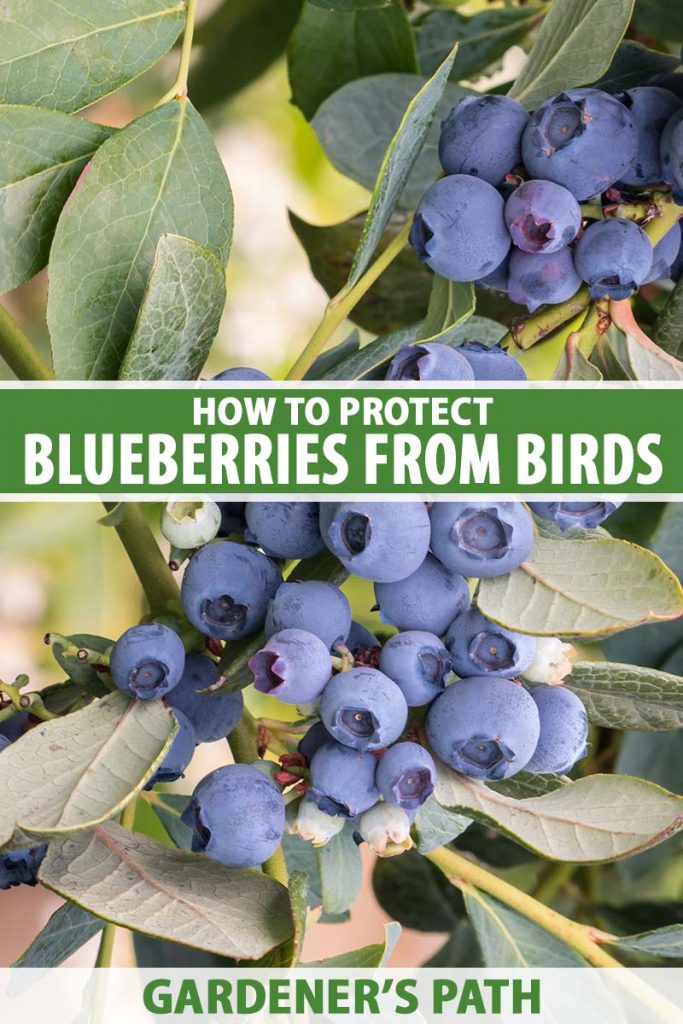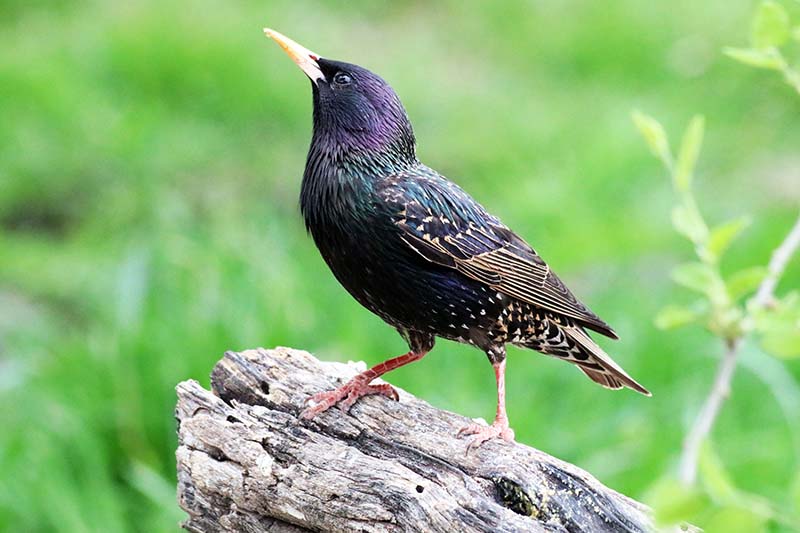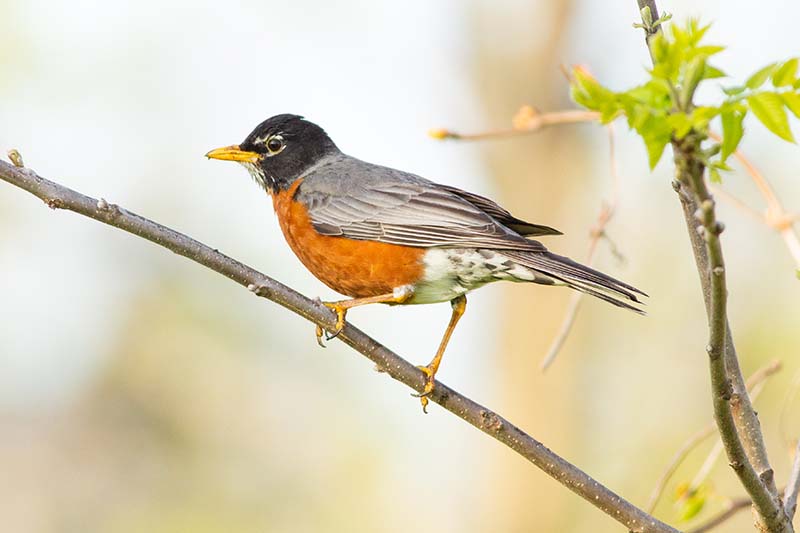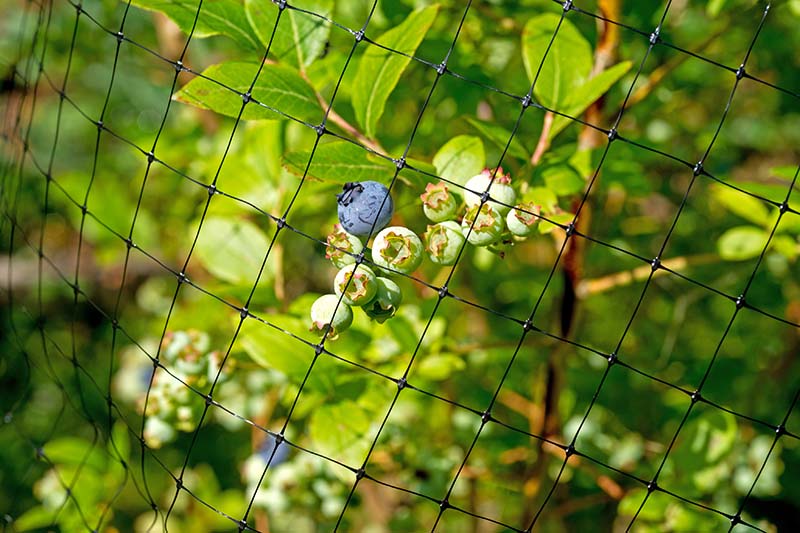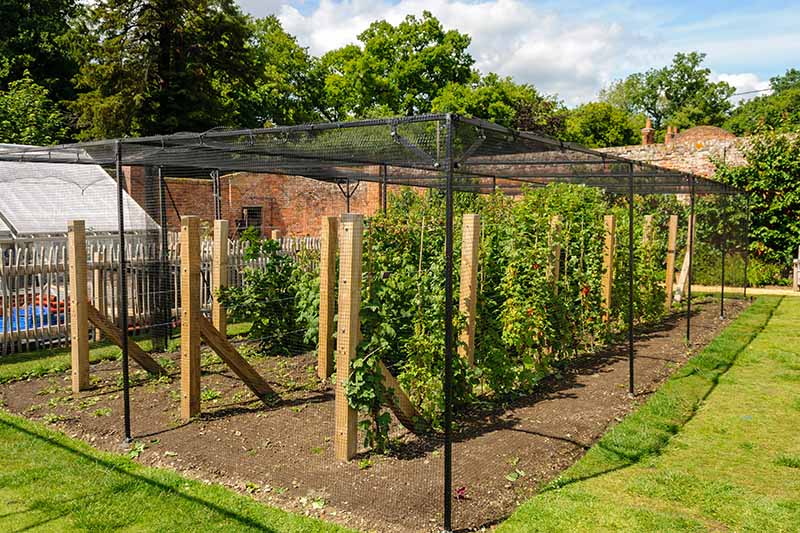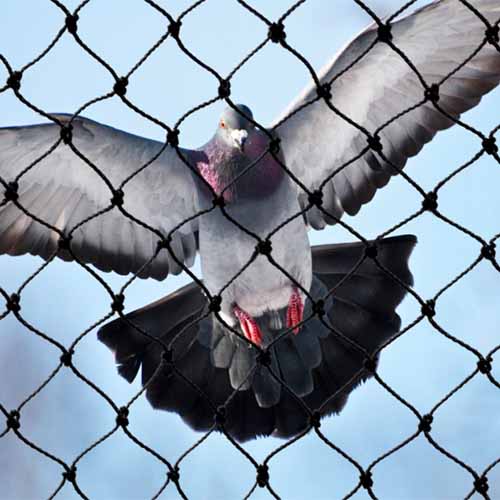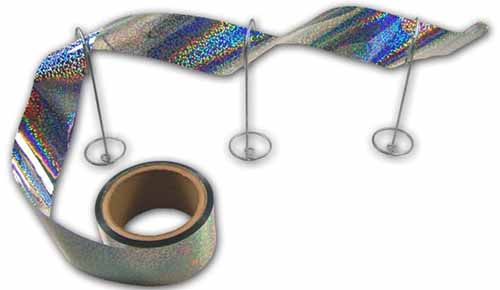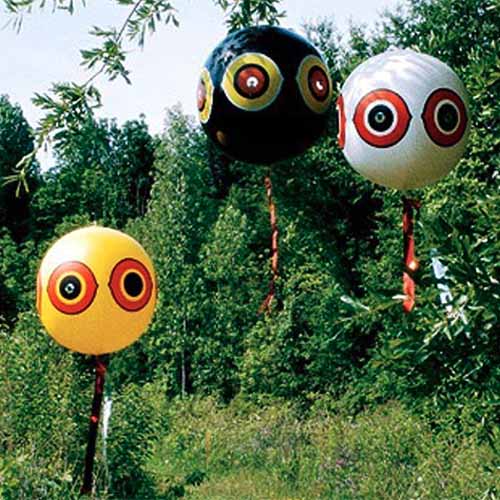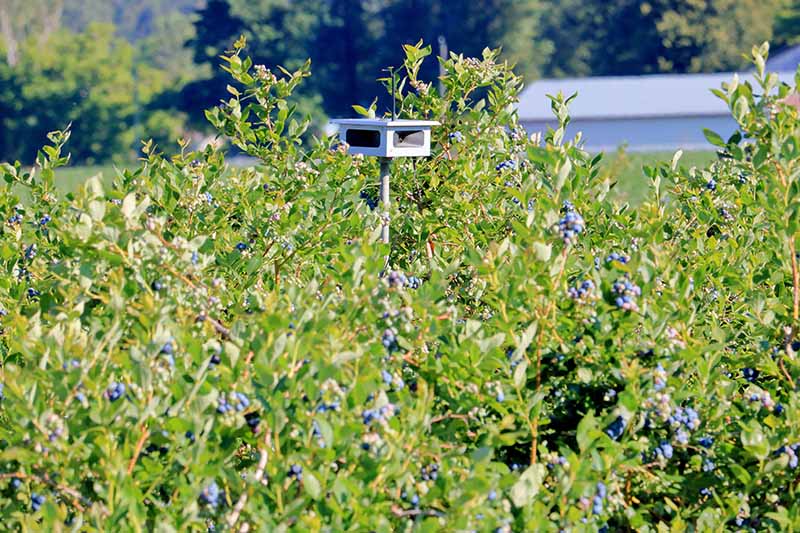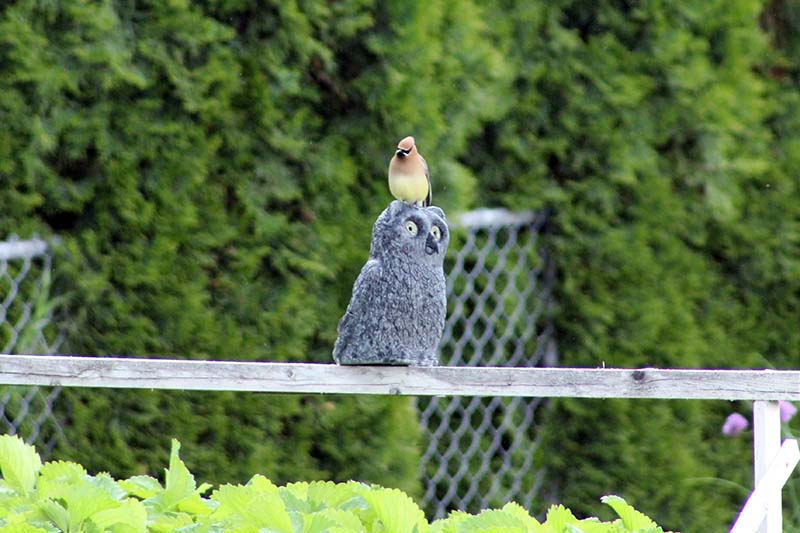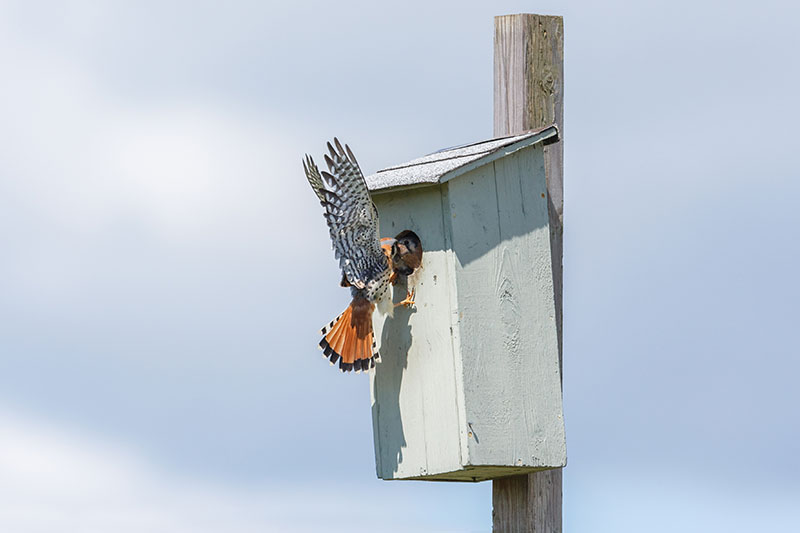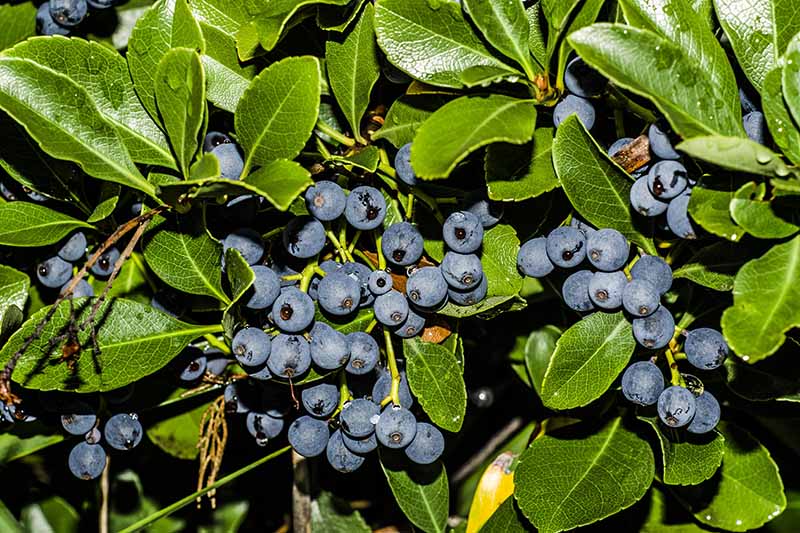A flock of hungry birds descends, and before you can get your hands on just one of those hard earned, mouth watering berries, your bushes are stripped clean. You can’t blame them for loving the fruit, but you don’t have to share your blueberries. We link to vendors to help you find relevant products. If you buy from one of our links, we may earn a commission. If you think big fields of blueberries would attract more birds than your small garden might, I hate to break it to you, but small isolated plantings can actually have higher yield losses. Luckily, you have options. The methods available to protect your berries from peckish fowl can be separated into four categories: physical, visual and auditory, repellents, and predators. Here’s everything we’ll cover:
Types of Birds to Watch For
First, what kinds of birds should you look out for exactly? Bigger birds will gobble the whole fruit. Smaller ones tend to peck into the fruit, leaving damaged berries to spoil. Both, in their happy frenzy, will knock ripe and unripe fruit off the bush. The most common blueberry-eating birds are starlings and robins. The European or common starling (Sturnus vulgaris) is both a fascinating species and an agricultural pest. Starlings arrive in large flocks, and will eat the fruit whole and puncture berries with their claws. American robins (Turdus migratorius), those lovely spring singers, will come individually or in small groups to snack on blueberries in between worm courses. House finches and red-winged blackbirds are also occasional blueberry pests. Seed-eating types like finches may not target blueberries specifically, but they are attracted to areas where weeds and grasses are allowed to go to seed. If these areas are near a blueberry patch, the temptation to try some for dessert is irresistible.
Physical Barriers
Netting is one of the best foolproof options, and it is commonly used by small and medium sized u-pick and other berry-growing farm operations. It will create a physical barrier between your ripening berries and the birds. Use three-quarter-inch mesh, which is small enough that all types will be excluded. Keep the netting eight to 12 inches off the ground so snakes don’t get tangled in the mesh. Use stakes or poles to prop the netting over the plants.
Visual and Auditory Options
Visual protection options available to you include shiny tape, terror eye balloons, and special hawk-shaped kites. Auditory tactics, such as loud noises, distress calls, and predator calls, are also available. Heavy Duty Protective Netting Netting is available at Home Depot in a variety of sizes. The idea here is to scare the birds enough to keep them away from your blueberries. Species-specific distress calls, special predatory attack calls, and Bird Bangers are also commercially available. Irri-Tape Repellent Ribbon Rolls of Irri-Tape Repellent Ribbon are available from Home Depot. Set out a few owl statues and move them every day, or every other day. Bird kites from Jackite, Inc. are hawk-shaped kites that you can buy specially to protect fruit. Peregrine Falcon Jackite Large inflatable balloons with reflective eyes and markings, also known as terror eye balloons, can intimidate birds enough to keep them away. Scare Eyes Inflatable Balloons The biggest issue with auditory options is they can become very annoying – to you, as well as your neighbors. Check local regulations before buying and using loud deterrents. Be aware that devices claiming to deter avian visitors via ultrasonic methods are not effective. The above-described visual and auditory options work best when used together. Set up a combination, such as a hawk kite with a predatory cry, as the fruit begins to ripen. It’s also important to realize that our feathered friends are smart. The “scarecrows” and sounds you use need to match. And both must be moved regularly so they don’t get used to them and begin to perch happily on your owl figurine, for example. They are intelligent enough, in fact, to learn to use the kites and sounds as signals that the fruit is ready. So you need to outsmart them, and always try to be one step ahead of them.
Repellents
Consider spraying your plants with some type of repellent to lead them to believe the fruit isn’t yummy after all (even though it still is). Methyl anthranilate, a compound that gives Concord grapes their characteristic aroma and flavor, is registered for use and approved by the FDA for repelling avian visitors. This chemical is completely safe for both humans and animals, but the birds don’t like it. To make grape Kool-Aid into a repellent spray, mix four packets with one gallon of water and spray plants when the fruit begins to color. As it only remains effective for a few days, reapply regularly and after rain. Grape Kool-Aid Packets of the unsweetened variety are available from Wal-Mart. Sucrose is another repellent that is somewhat effective. Many varieties of fruit-eating birds – such as starlings, robins, and thrushes – are not able to digest sucrose. It will give them diarrhea, and after consuming enough fruit covered in a layer of it, they may develop an aversion to your beautiful blueberries. To make your own spray solution, mix five pounds of granulated sugar with two quarts of water in a large pot on the stove, and heat it to dissolve the sugar completely. This should yield about a gallon of spray solution. Apply as the berries ripen and again after rain. Both repellent options are completely safe for humans, insect visitors, and the birds themselves. The problem with these options is that high concentrations are needed for them to be effective, and they need to consume a lot of either of these (and a lot of your berries, as well) before they will be put off.
Predators
One option that will have avian blueberry pests diving for cover and staying away is real natural predators such as falcons. Their presence alone is enough to keep others away. You can attract raptors like the American kestrel to your area by building and placing special nesting boxes in your yard. Ask your neighbors if you can add some to their properties as well (sweeten the deal with a promise of shared, saved blueberries of course). Kestrel nesting boxes should be placed 10 to 30 feet high on a freestanding tree or pole. Boxes should have a floor size of eight by eight inches, a depth of 16 to 18 inches, a height of 18 inches, and a three-inch entry hole. Line the bottom with wood chips. Starlings, being highly successful and opportunistic, can decide to claim these boxes as their own, so monitor for Mr. and Mrs. Starling and company moving in. If you notice starlings beginning to build a nest inside, remove the nest and continue to monitor them. It might take a few nest removals for them to get the message and move somewhere else.
In all seriousness, I do love birds and how they add life to a garden. If you have extra berries, many avian visitors will appreciate the sweet snack. But you don’t have to let them have them all. Try out one, two, or three of these methods, figure out which works best in your berry patch, and reap the rewards. Once you’ve had your fill, go ahead and treat the cheerful wildlife if you wish. Just remember to save some berries for the neighbor that let you put up kestrel nesting boxes everywhere, too. Do you have trouble with wildlife eating your fruit? Have you found a foolproof method to keep your sweet homegrown snacks safe? Tell us about it in the comments below! And for more information about growing blueberries in your garden, check out these guides next:
How to Grow BlueberriesHow to Harvest Perfectly Ripe BlueberriesHow to Transplant BlueberriesTips for Growing Blueberries in Containers
